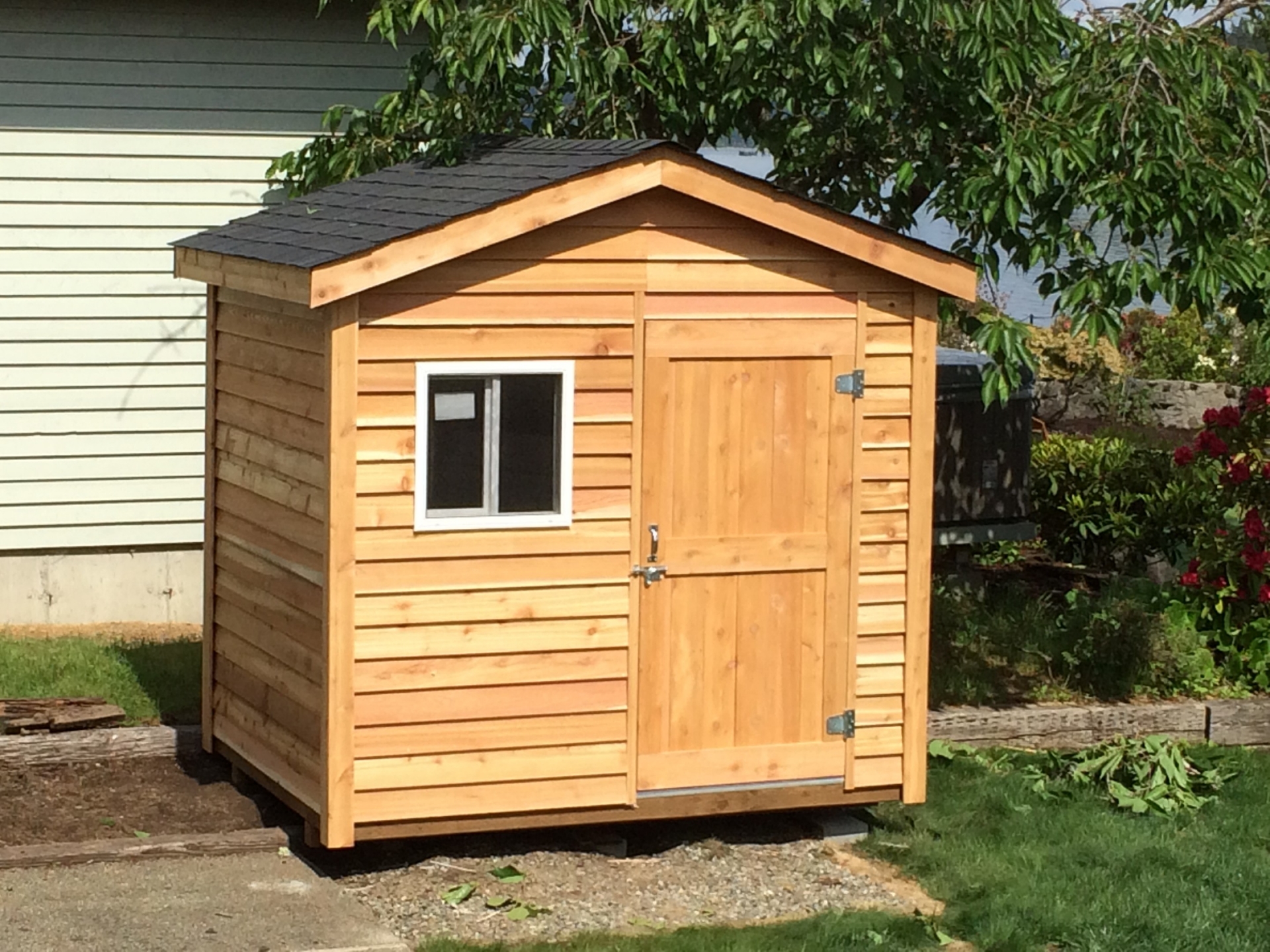
Optimizing Functionality in an 8x6 Shed Design
The design of an 8x6 shed, while seemingly modest in size, presents a significant challenge: maximizing functionality within a limited footprint. Careful planning and consideration of specific needs are crucial for creating a truly effective and usable space. This document outlines a comprehensive approach to designing an 8x6 shed for maximum utility, covering key aspects from structural considerations to interior organization.
I. Foundation and Structural Considerations
The foundation forms the bedrock of any successful shed construction. An unstable base will lead to structural problems and compromise the longevity of the shed. For an 8x6 structure, several options exist, each with its own advantages and disadvantages.
A. Concrete Slab Foundation
A concrete slab provides a robust and level base, ideal for heavier sheds and those intended for more demanding use. Advantages include superior stability, resistance to moisture, and a clean, finished floor. Disadvantages include higher cost and the need for professional installation in many cases. The slab should be at least 4 inches thick, reinforced with rebar, and properly leveled to ensure a stable platform.
B. Gravel Base Foundation
A gravel base offers a more cost-effective alternative to a concrete slab. A layer of compacted gravel provides drainage and a relatively level surface. Advantages include lower cost and simpler installation. Disadvantages include less stability compared to a concrete slab and potential for uneven settling over time. Proper compaction is essential to minimize settling and ensure a firm base for the shed's framing.
C. Pier and Beam Foundation
A pier and beam foundation involves supporting the shed on concrete piers, providing excellent drainage and minimizing contact with the ground. This option is especially beneficial in areas with high water tables or poor soil conditions. Advantages include enhanced drainage and resistance to ground moisture. Disadvantages include increased complexity of construction and potentially higher costs compared to a gravel base.
II. Optimizing Interior Space
The limited floor area of an 8x6 shed demands meticulous planning for efficient space utilization. Careful consideration of storage solutions and workflow is crucial.
A. Shelving and Vertical Storage
Maximizing vertical space is paramount in a small shed. Installing shelves on the walls and potentially even the ceiling (with appropriate structural support) will significantly increase storage capacity. Consider adjustable shelving to accommodate items of varying heights and sizes. Deep shelving units should be avoided as they can make accessing items at the back difficult.
B. Workbenches and Organization
If the shed is intended for workshop use, a well-designed workbench is essential. Consider a fold-down workbench to save space when not in use. Incorporate drawers and cabinets beneath the workbench for tool and materials storage. Utilize pegboards or wall-mounted organizers to keep tools readily accessible and prevent clutter.
C. Door and Window Placement
The placement of doors and windows significantly impacts the usability of the shed. A single door on one of the longer sides is generally recommended to maximize usable floor space. Windows should be strategically placed to provide adequate natural light while minimizing heat gain or loss depending on the climate.
III. Material Selection and Construction Techniques
The choice of materials directly affects the shed's durability, cost, and aesthetic appeal. Careful consideration of these factors is essential.
A. Framing Materials
Pressure-treated lumber is typically preferred for its resistance to rot and insect infestation. Consider using dimensional lumber for the frame for greater strength and stability. Ensure all lumber is properly treated and cut to precise dimensions.
B. Siding and Roofing Materials
Siding options range from vinyl to metal to wood. Vinyl siding is relatively low-maintenance and comes in a variety of colors, while metal siding is extremely durable but can be more expensive. Wood siding offers a more natural aesthetic but requires more regular maintenance. For roofing, consider asphalt shingles for their cost-effectiveness and ease of installation, or metal roofing for superior durability and longevity.
C. Insulation and Ventilation
Proper insulation and ventilation are crucial for maintaining a comfortable temperature inside the shed, especially if it will be used as a workshop or storage for temperature-sensitive items. Consider using spray foam insulation for its excellent insulating properties and air sealing capabilities. Adequate ventilation is crucial to prevent moisture build-up and mold growth.
IV. Specific Functionality Considerations
The intended use of the shed dictates specific design considerations. The following outlines considerations for common shed uses:
A. Gardening Shed
For a gardening shed, prioritize shelving for storing tools, seeds, and fertilizers. Include a potting bench for comfortable plant preparation. Good ventilation is crucial to prevent mold growth on stored items.
B. Workshop Shed
A workshop shed requires robust workbenches, ample storage for tools and materials, and adequate lighting. Consider dust collection systems and electrical outlets for power tools. Ensure sufficient ventilation to remove dust and fumes.
C. Storage Shed
For a storage shed, focus on maximizing storage capacity through shelves, racks, and potentially overhead storage. Durable materials resistant to moisture and pests are essential.
V. Conclusion
Designing an 8x6 shed for maximum functionality requires careful planning and attention to detail. By considering the foundation, interior organization, material selection, and specific functional requirements, it is possible to create a highly effective and usable space despite its modest dimensions. A well-designed shed can provide years of reliable service, making a significant contribution to the overall utility of a property.
Sign up here with your email
ConversionConversion EmoticonEmoticon
Note: Only a member of this blog may post a comment.